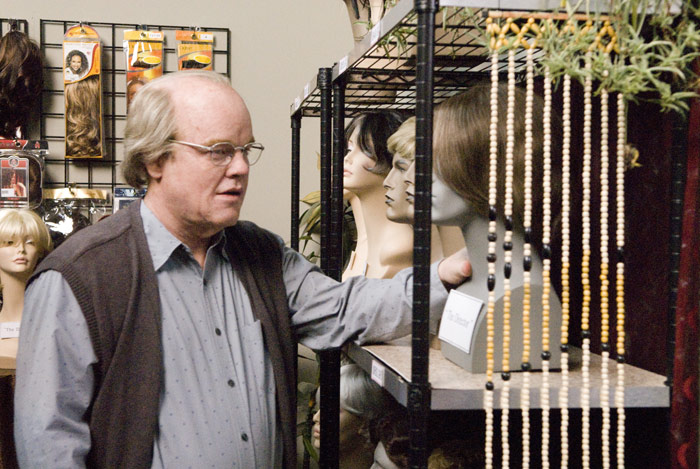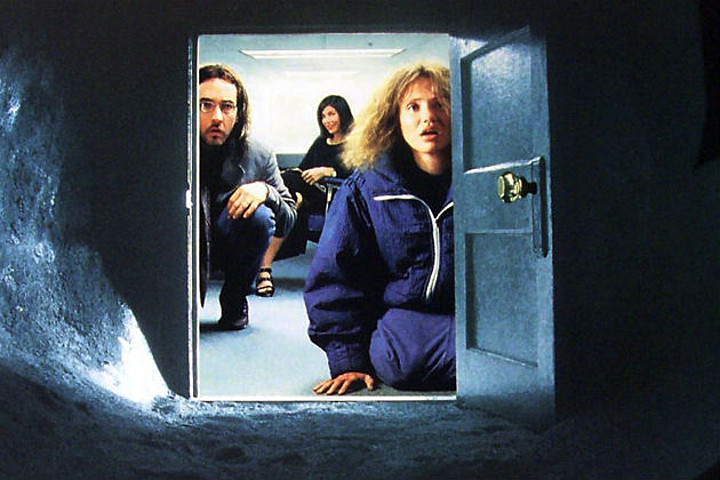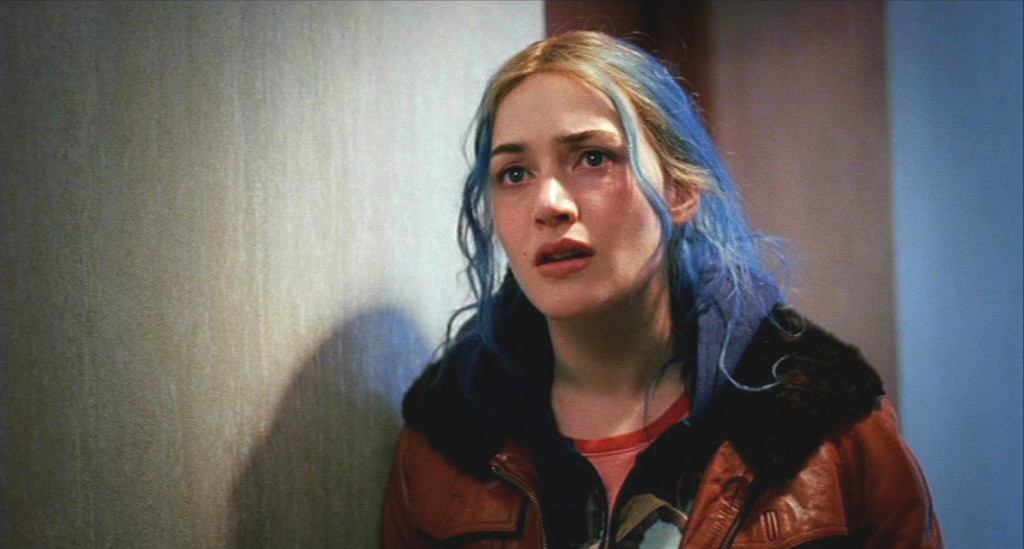3. Synecdoche, New York (2008)

“Synecdoche, New York” may be Kaufman’s most underrated film. Even though it was nominated for the Palme d’Or and the Golden Camera at the Cannes Film Festival of the same year, it was sharply polarized by critics. Some called it pretentious or “self-indulgent”; others, including Roger Ebert, declared it a masterpiece and ranked it among the best films of the 2000s.
The plot follows an ailing theatre director, Caden Cotard (Philip Seymour Hoffman), as he works on an increasingly elaborate stage production whose extreme commitment to realism begins to blur the boundaries between fiction and reality. The film’s title is a play on Schenectady, New York, where much of the film is set, and the concept of synecdoche, wherein a part of something represents the whole, or vice versa.
The philosophical motifs of this film are what actually make it great. Many reviewers believe Kaufman’s writing is influenced by Jungian psychology, as Carl Jung wrote that the waking and dream states are both necessary in the quest for meaning. Caden often appears to exist in a combination of the two. Kaufman has said: “I think the difference is that a movie that tries to be a dream has a punchline and the punchline is: it was a dream.”
Another concept in Jungian psychology is the four steps to self-realization: becoming conscious of the shadow (recognizing the constructive and destructive sides), becoming conscious of the anima and animus (where a man becomes conscious of his female component and a woman becomes conscious of her male component), becoming conscious of the archetypal spirit (where humans take on their mana personalities), and finally, self-realization, where a person is fully aware of the ego and the self. Caden seems to go through all four of these stages.
When he hires Sammy, he learns of his true personality and becomes more aware of himself. He shows awareness of his anima when replacing himself with Ellen and telling Tammy that his persona would have made him more adept in womanhood than in manhood. In taking on the role of Ellen, he becomes conscious of the archetypal spirit and finally realizes truths about his life and about love.
Early in the film, Hazel purchases a house that is eternally on fire. At first showing reluctance to buy it, Hazel remarks to the real estate agent: “I like it, I do. But I’m really concerned about dying in the fire.” Which prompts the response: “It’s a big decision, how one prefers to die.” In an interview with Michael Guillén, Kaufman stated: “Well, she made the choice to live there. In fact, she says in the scene just before she dies that the end is built into the beginning.
That’s exactly what happens there. She chooses to live in this house. She’s afraid it’s going to kill her but she stays there and it does. That is the truth about any choice that we make. We make choices that resonate throughout our lives.” The burning house motif has been compared to the Tennessee Williams quote: “We all live in a house on fire, no fire department to call; no way out, just the upstairs window to look out of while the fire burns the house down with us trapped, locked in it.”
2. Being John Malkovich (1999)

The movie that was Kaufman’s debut and put him on the map has one of the most original screenplays ever written. What makes it so good – except for its stream of dazzling inventions, twists, and wicked paradoxes – is once again the well-used postmodern elements that transform it into a simultaneously funny and serious, sad and satirical, weird and touching film.
The theory of Bambouska is another beautiful consequence of postmodern narratives. “Being John Malkovich” takes advantage of it and provides a thrilling story. The reaction of the two zones of McHale, as previously referred, vary with many techniques in cinema. Although, in Kaufman’s world, there is only one dominant: “the worlds of the Chinese Box” or “the worlds of Bambouska”.
The definition of these lies in the procedure in which someone executes the same process again and again, each time in the object of the previous process. In this way, these zones are in a state of reaction, put together not in parallelism but in a manner that each one constitutes a subframe of a bigger-until-the-first superset of zones. Once again, subjectivity and objectivity are so close that they cannot be separated and the result leads into a unique film.
1. Eternal Sunshine of a Spotless Mind (2004)

It’s one thing to wash that man right outta your hair, and another to erase him from your mind. “Eternal Sunshine of the Spotless Mind” is one of the most romantic stories ever told in both the most peculiar and realistic way. Compared to this film, “Being John Malkovich” and “Adaptation” were neorealism. The movie is a radical example of Maze Cinema, that style in which the story coils back upon itself, redefining everything and then throwing it up in the air and redefining it again.
The funny thing about love is that it can survive the circumstances of its ending; we remember good times better than bad ones, and Joel (Jim Carrey) decides mid-process that maybe he would like to remember Clementine (Kate Winslet) after all. He tries to squirrel away some of his memories in hidden corners of his mind, but the process is implacable. If you think this makes the movie sound penetrable, you have no idea.
As the movie opens, Joel is seized with an inexplicable compulsion to ditch work and take the train to Montauk, and on the train he meets Clementine. For all they know they have never seen each other before, but somehow there’s a connection, a distant shadow of deja vu. During the course of the film, which moves freely, dizzyingly, forward and backward in time, they will each experience fragmentary versions of relationships they had, might have had, or might be having.
Despite jumping through the deliberately disorienting hoops of its story, “Eternal Sunshine of a Spotless Mind” has an emotional center, and that’s what makes it work. Leaving aside all the previously referred philosophical terms and theories, which this film includes them all, “Eternal Sunshine” focuses on the most important thing: the feelings. Nowadays, most of us try to think more and feel less. Kaufman asks us to do the opposite.
Author Bio: Alexandros Rellos is currently a film student in Greece. He has written and directed three short films and dreams that one day cinema will respond to his hopeless love. You can support his future cinematic projects here: https://www.patreon.com/alexandrosrellos.